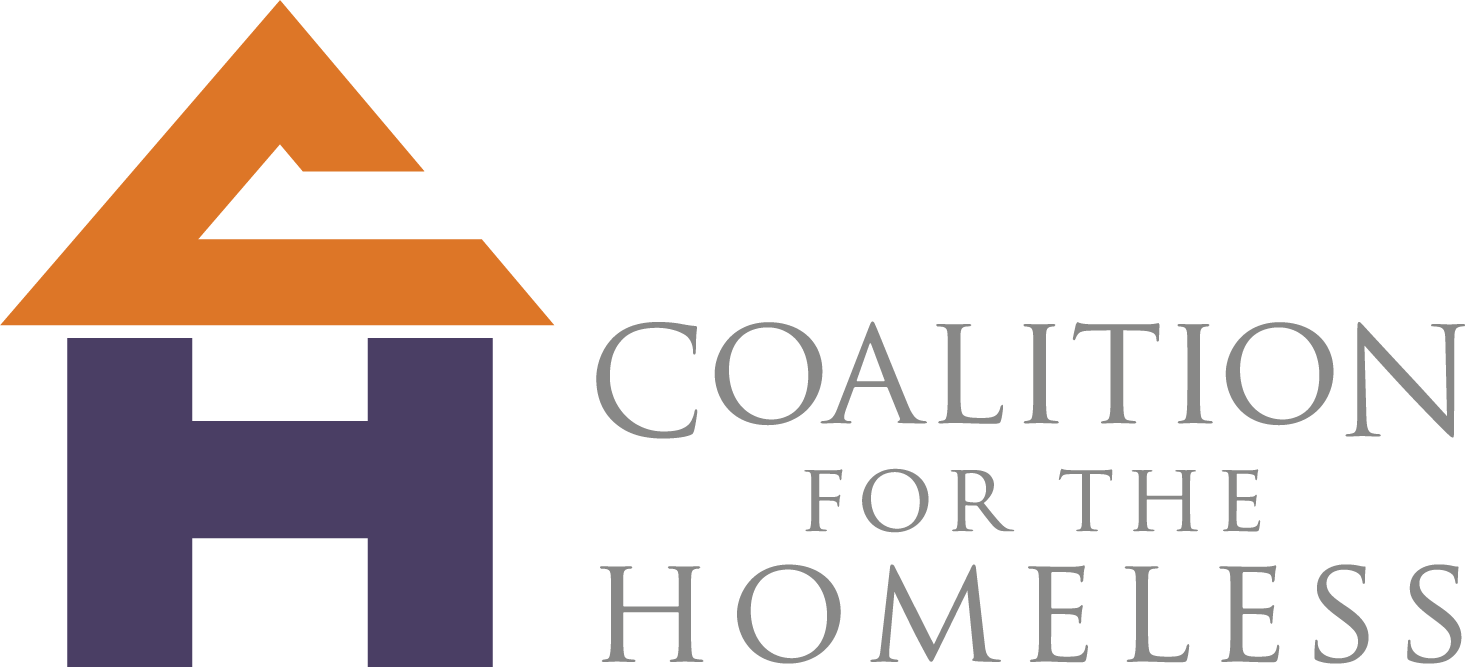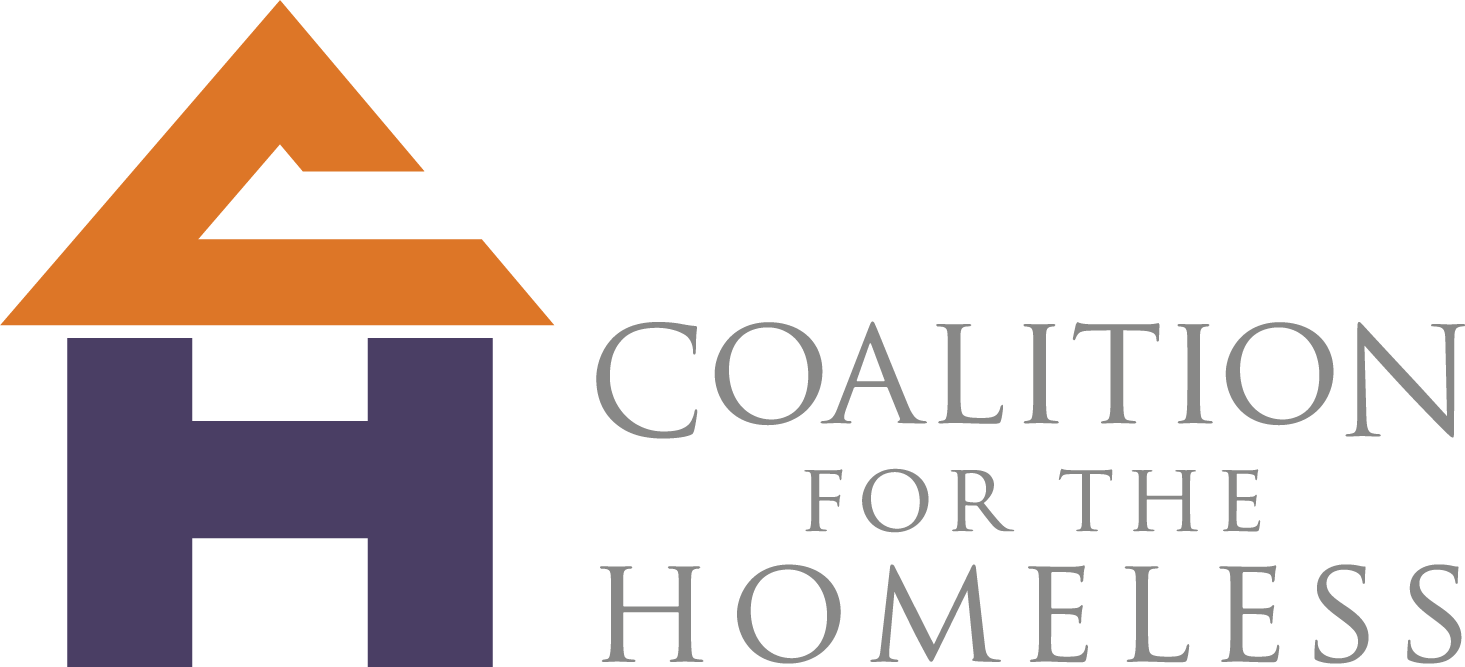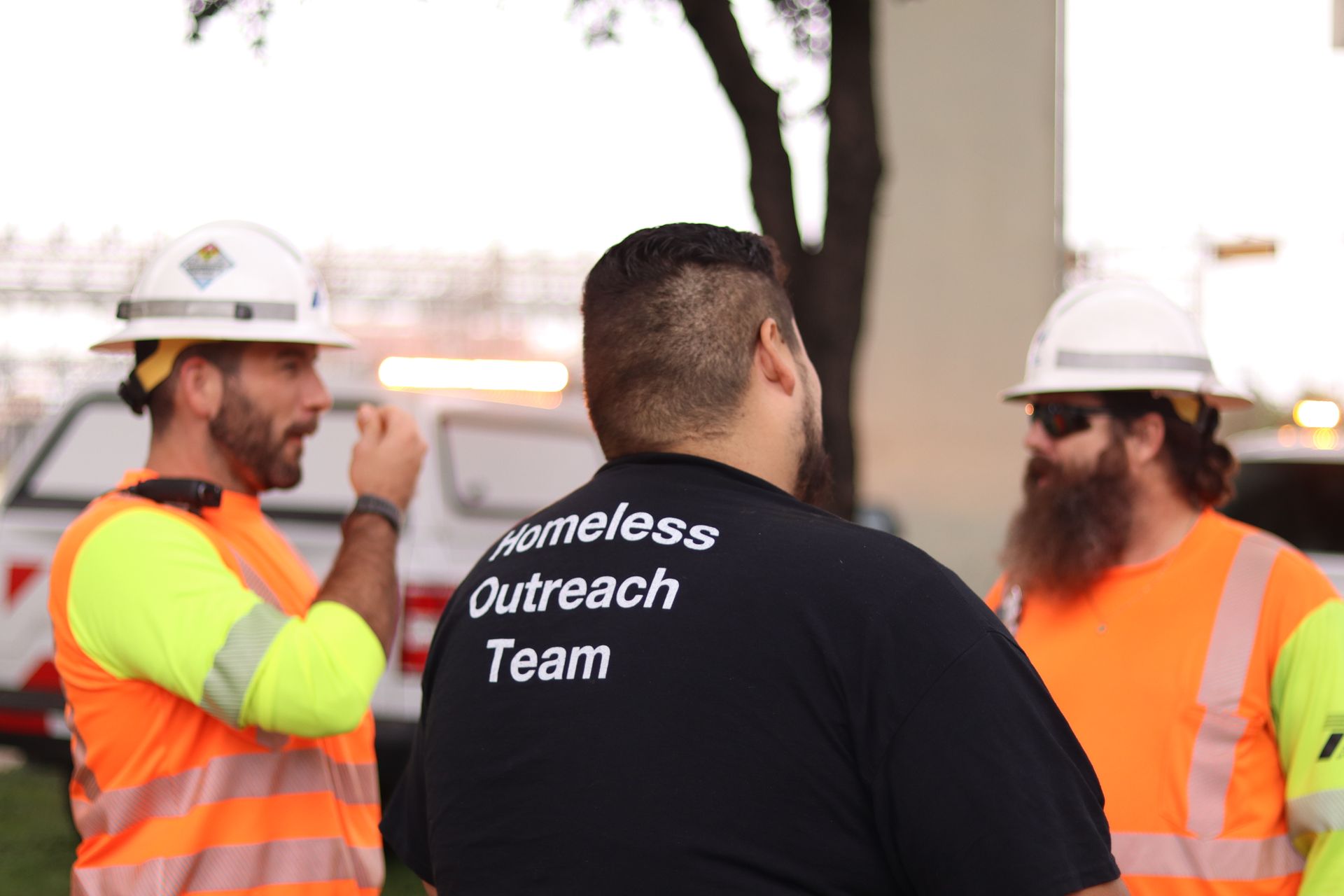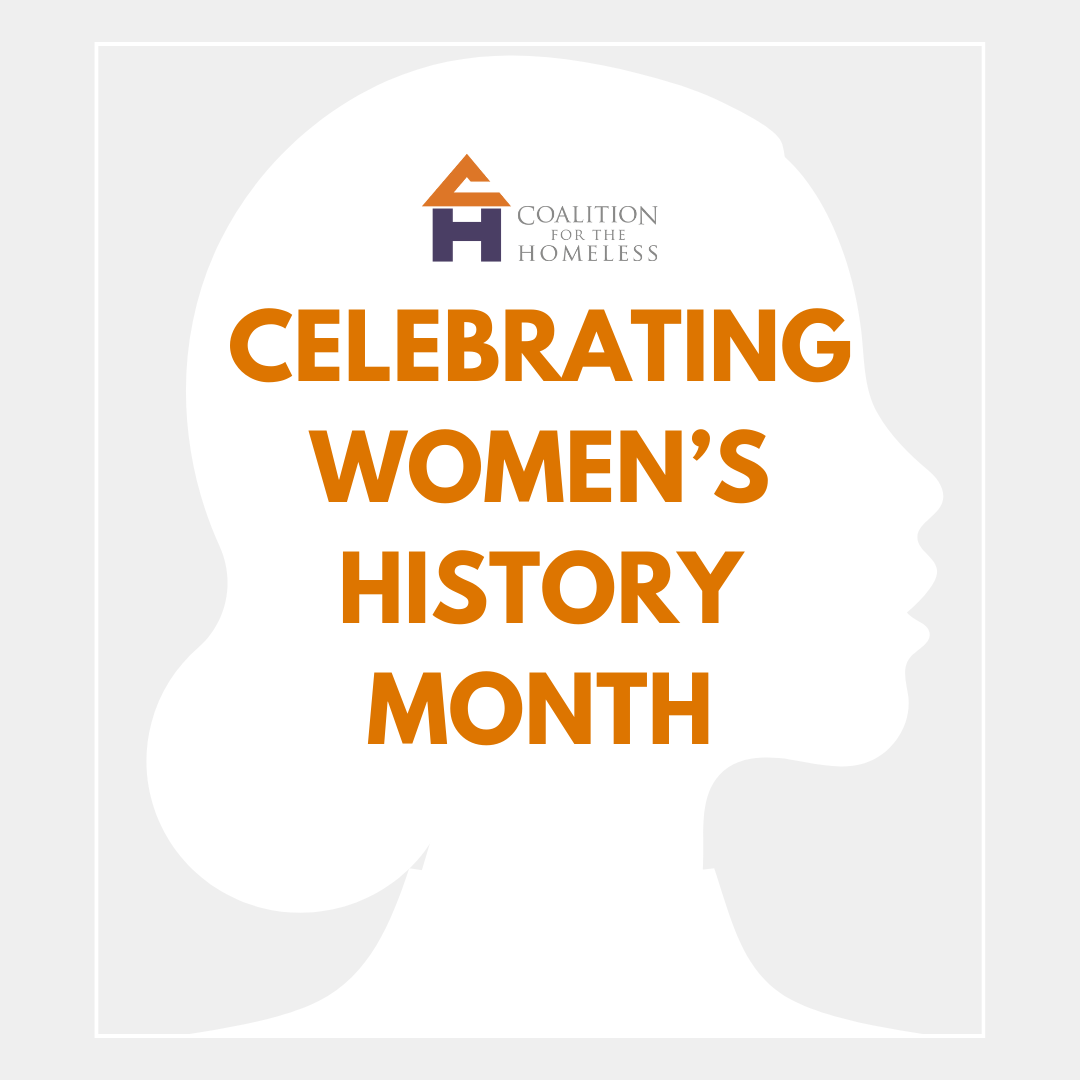Hurricane Harvey: Five Years Later
It has been five years since Hurricane Harvey flooded Houston and forever changed our city. On this anniversary week, the Coalition is reflecting on Harvey’s impact on homelessness in our community — not only its adverse effects, but also the lessons we learned that helped us to design a nationally recognized response to COVID.
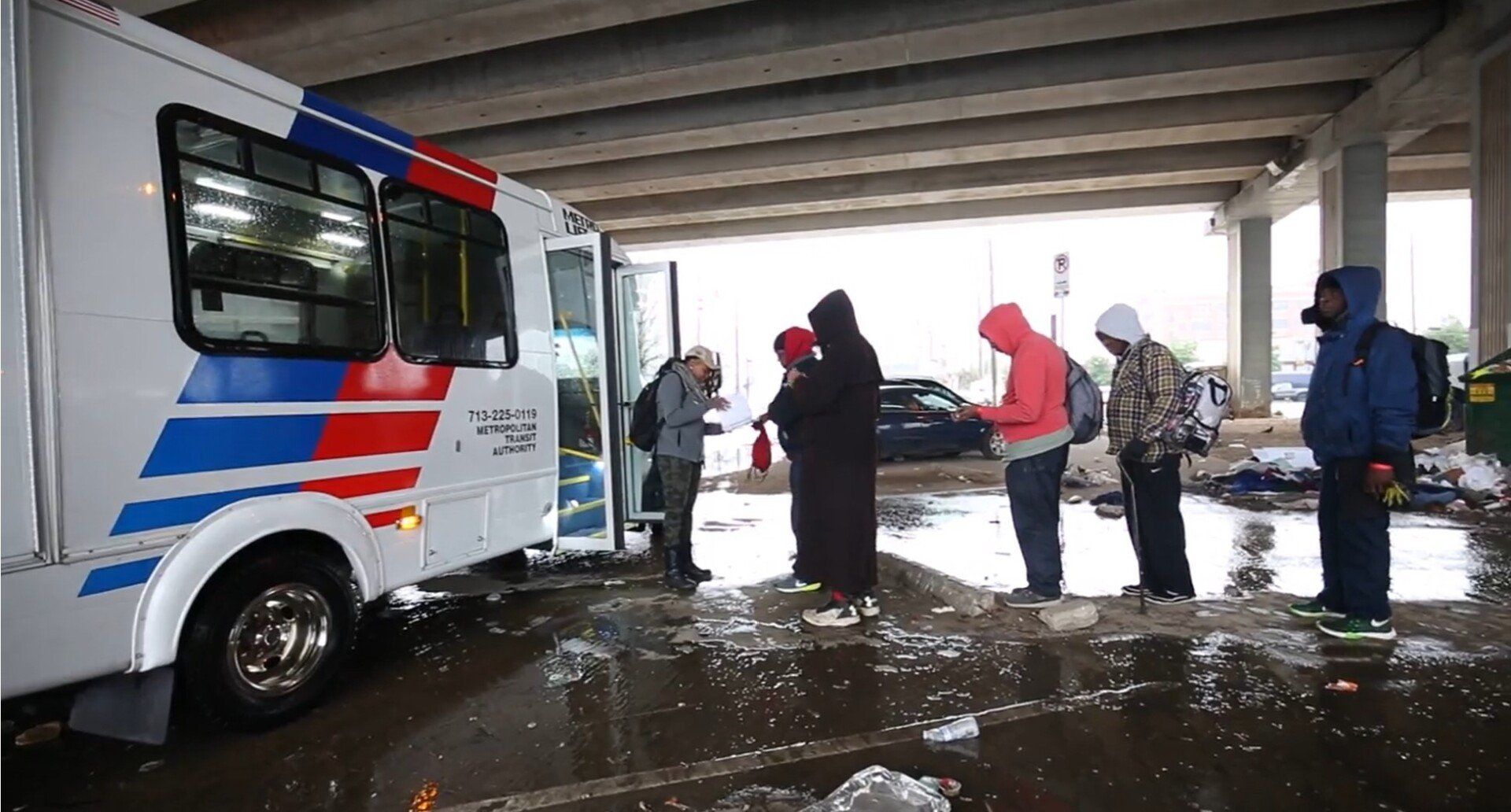
From 2011 to 2017, our annual homeless Count steadily declined every year. We had placed more than 11,200 people into permanent housing since 2012, and we had effectively ended Veteran homelessness in 2015.
The 2018 Count was the first Count conducted after Harvey — and that Count showed a 15% jump in the total number of people experiencing homelessness from the year before.
In fact, there are still people today who attribute their homelessness to Hurricane Harvey. In our 2022 Point-in-Time Count and Survey, conducted in January, one out of every seven people experiencing unsheltered homelessness said the cause of their homelessness to a natural disaster, most commonly Hurricane Harvey.
Harvey affected homelessness in several ways:
People who were already experiencing homelessness, especially unsheltered homelessness, were particularly vulnerable to Harvey because they were exposed to the elements. People in low-lying areas or near bodies of water risked drowning.
For others, Harvey caused their homelessness — whether immediately or later on.
People who were unstably housed — for example, doubled-up staying with friends or family or otherwise staying somewhere their name wasn’t on the lease — were not immediately eligible for FEMA assistance (e.g., hotel vouchers) or might not have been welcomed back in their previous living situation following the shake-up.
Some affordable housing near bayous was irreparably damaged, meaning that some people lost the only housing that was accessible to them. It also meant that the already-tight affordable housing market in Houston became even more so after Harvey, likely leading others to fall into homelessness months or years later for lack of an affordable place to live.
Still others lost jobs or income due to Harvey and fell into homelessness. It was near-impossible for those living at a disaster shelter to get or maintain employment.
The Coalition for the Homeless and its partners in The Way Home helped all of these people in the immediate aftermath of Harvey — and have continued to help in the years since.
Note: There were also many people whose homes were damaged or destroyed by Harvey, who temporarily had to stay in shelters; however, access to aid from the Red Cross, private insurance and/or from FEMA ensured they fortunately did not require the help of the homeless response system to get back into their own homes.
How we helped:
Housing for Harvey
Immediately following the flood, staff from the Coalition for the Homeless and other partners of The Way Home set up shop in the George R Brown (GRB) Convention Center, which was used as a disaster shelter.
The Coalition worked with SimTech Solutions to create a triage tool accessible via mobile phones so we could understand who was experiencing literal homelessness at the disaster shelter and learn more about their needs and experiences. This proved to be key in developing our game plan.
Alongside the Houston Housing Authority and the City’s Housing and Community Development Department, we worked around the clock to house people who faced homelessness and lacked access to other resources through two programs: Residences on Emancipation and Housing For Harvey.
Residences on Emancipation was a transitional program managed by New Hope Housing with supportive services provided by SEARCH Homeless Services and was prioritized for the most vulnerable people at the disaster shelter.
Housing For Harvey was dedicated for those who had been living unstably prior to the hurricane, focusing on a Rapid Re-housing model that included rental assistance and focused, housing stabilization case management.
Ultimately, the partners of The Way Home housed 942 people from the disaster shelter at the GRB. Once they were stably housed, we also helped connect them to sources of income.
Read more about Housing for Harvey.
Housing Harvey’s Homeless (H3)
In the years after Harvey, a large encampment formed in the 900 block of Chartres near Minute Maid Park. It was the city’s largest encampment with more than 100 residents at any given time.
Over the course of several months in 2020, and with funding from the state of Qatar and the Houston Downtown Management District, the Coalition and its partners moved 173 people from the encampment into permanent housing with wrap-around supportive services. Nearly 95% of these individuals were still housed 6 months later.
What we learned
We learned lessons from the response to Harvey that are instrumental in carrying out our work today —especially in responding to the COVID pandemic:
In trying to secure apartments from the private rental market for people leaving the GRB, we came up with the idea for one-time landlord incentive fees (LIFs). LIFs turned out to be an incredibly useful tool in engaging property managers — so effective, in fact, that the federal government took notice!
As other communities across the nation looked to Houston and our innovative COVID response, they asked the federal government to make public funds available to use for these fees. Now, instead of having to use our hard-earned private funds for LIFs, this is an approved expense for public funds. And LIFs have been crucial in allowing us to secure apartments for the Community COVID Housing Program.
Our experience with the encampment at Chartres taught us many lessons we applied in our now-nationally recognized encampment strategy. The availability of physical housing units was sporadic, meaning it often took months to permanently house residents from the Chartres encampment. This slow outflow meant that new people moved in over time, making it tough to close the encampment permanently.
Now, to prevent the “backfill” experienced at Chartres, all residents of an encampment are now rapidly transitioned directly into housing within three to five days! (Note that this follows four to six weeks of advance coordination and leadership by the Coalition and its partners.)
Perhaps the most important lesson learned from Harvey is that we are only as resilient as our most vulnerable community members. We know that when people have access to safe, affordable housing they can lead healthier and more productive and fulfilled lives — and they’re safer when disaster strikes. That’s why the Coalition for the Homeless and its partners in The Way Home work every day to get people out of shelters, off the streets, and into their own homes.
All Rights Reserved |
Coalition for the Homeless of Houston/Harris County

